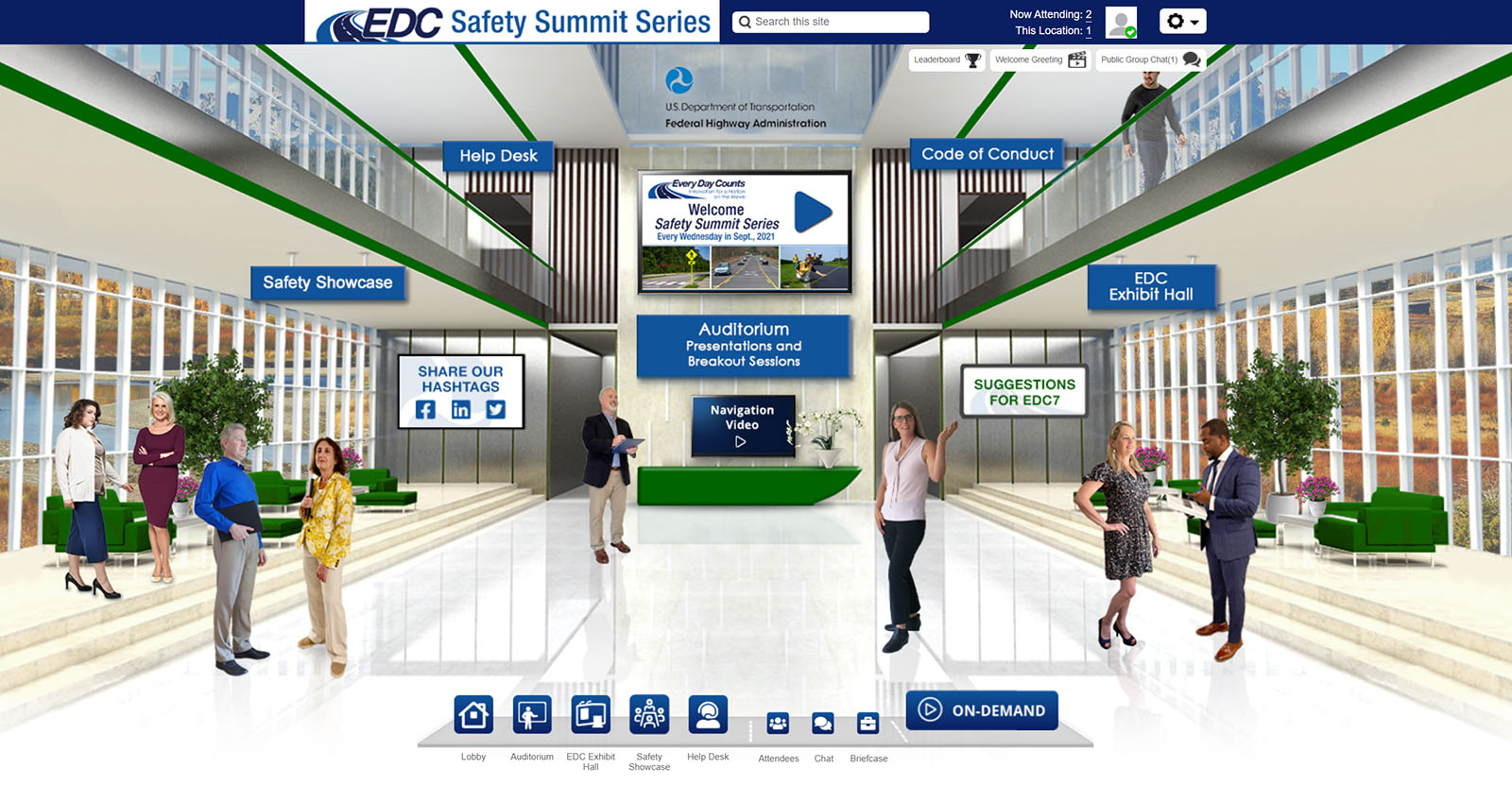
FHWA Celebrates Safety Innovation in First EDC Safety Summit Series
Safety should be celebrated.
Throughout September, 28 State and local agencies partnered with the FHWA Office of Safety to host the Every Day Counts (EDC) Safety Summit series. The summit highlighted the successes of safety innovations promoted in EDC over the last decade.
Each week of the five-part series focused on a different EDC safety initiative. Together, they represented 10 years of hard work and partnership between FHWA, State departments of transportation (DOTs), and local and tribal agencies to get people where they are going safely.
“Saving lives on our roadways is our highest priority. The EDC program—and the Safety Summit series in particular—help us focus on safety innovations that have already saved countless lives across the country,” said Cheryl Walker, FHWA Associate Administrator for Safety. “We want these proven safety innovations to become more widespread so more lives will be saved in the future. This year’s safety summit is now in our rear-view mirrors, but the information we all learned is still front and center—and it will help us drive safety forward in the year ahead.”
The sessions included success stories from FHWA, 15 State DOTs, and 13 local agencies. They can all be viewed on demand in the virtual conference platform.
Week 1: Safe Transportation for Every Pedestrian (STEP)
In 2018, more than 6,000 pedestrians died on the country’s roadways, the most since 1990. Nearly 75 percent of those fatalities happened away from intersections, at midblock or uncontrolled crossing locations.
There are many countermeasures proven to reduce pedestrian deaths. The prime focus of the STEP initiative is to help State DOTs and local agencies deploy these countermeasures systemically across their roadway systems.
The STEP session featured presentations on the STEP “Spectacular Seven” countermeasures and from three DOTs: Virginia, Maine, and North Carolina. A practitioner from each State shared how they have incorporated STEP countermeasures, as well as lessons learned and plans for the future.
Week 2: Data-Driven Safety Analysis (DDSA)
What if you could predict where severe crashes might happen and deploy countermeasures to prevent them? New software and analysis approaches make that possible.
These approaches include Local Road Safety Plans (LRSPs), the systemic approach to safety, and predictive analysis. Presentations were made by FHWA, the Minnesota and Massachusetts DOTs, and the Delaware Valley Regional Planning Commission. Topics included an overview of DDSA, project benefit evaluation criteria, and incorporating equity into DDSA.

View any of the Safety Summit sessions on demand from the virtual conference platform website.
Credit: FHWAWeek 3: Rural Roadway Departures
Nearly 12,000 people die each year when their car leaves its travel lane on a rural road. That is 30 people, on average, every day. Many strategies and countermeasures exist to reduce these crashes. This session highlighted these life-saving tools, with a special focus on two past EDC initiatives: high friction surface treatments (HFST) and SafetyEdgeSM.
The session included presentations on all these topics, including California’s LRSP efforts, how the South Dakota DOT has deployed HFST, and Kentucky’s use of the systemic approach, among others.
Week 4: Intersection/Interchange Geometrics
Traditional intersections pose multiple safety issues for road users, especially during left turn movements. Fortunately, many alternative intersection designs exist that reduce conflict points and change the angle at which vehicles move through the intersection, making all road users safer.
The session included presentations from the Minnesota, Missouri, Indiana, North Carolina, and Georgia DOTs. Breakout session topics included communication and messaging in advancing innovative intersections and how alternative intersection designs can be incorporated into the Safe System Approach.
Week 5: Road Diets (Roadway Reconfigurations)
As communities desire “complete streets” and more livable spaces, agencies must better integrate pedestrian and bicycle facilities, as well as transit options. A road diet can be a great option for communities to convert an existing four-lane, undivided highway to a three-lane road with two through lanes and a center, two-way left-turn lane. Road diets are proven to reduce total crashes by up to 47 percent.
Presentations included road diet myth-busters, rightsizing streets for safety and community, and experiences with road diets from the Seattle, Arizona, and Minnesota DOTs.
Celebrating Safety
The first ever EDC Safety Summit series brought a decade of work and progress in road safety into one venue. Much progress has been made, but there is still so much to do to reach zero deaths on the Nation’s roadways.
Vic Lund, a traffic engineer for St. Louis County, MN, and a speaker at the summit, summed up his experience: “I greatly enjoyed participating in the Safety Summit series. I don’t take our teamwork for granted. Bringing together all these safety efforts in one place was encouraging and helpful. I can’t wait for the next one!”
—MORE INFORMATION
Register for access to view the discussions and download presentations via the virtual conference platform.
Contact Karen King or Becky Crowe for more information on the summit series or accessing the on-demand presentations.
Recommended Citation: U.S. Department of Transportation, Federal Highway Administration - Washington, DC (2021) Innovator Newsletter, November/December 2021, Volume 15 (87). https://doi.org/10.21949/1521365



